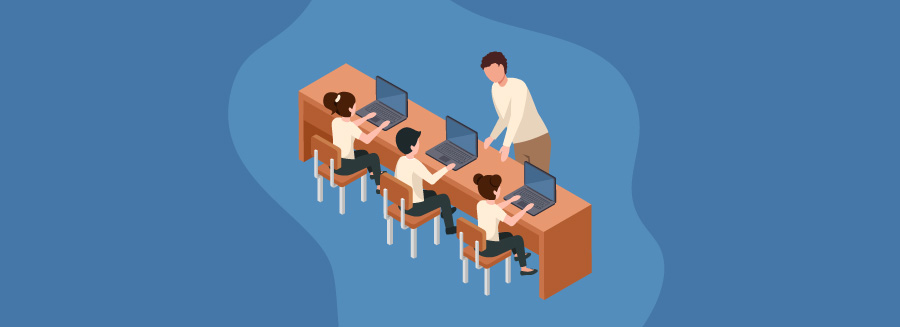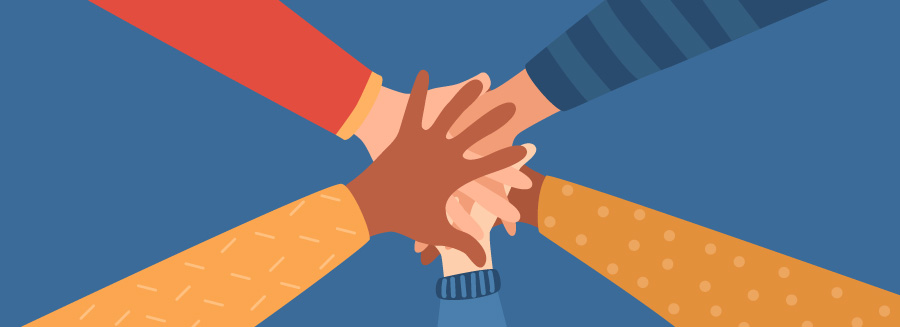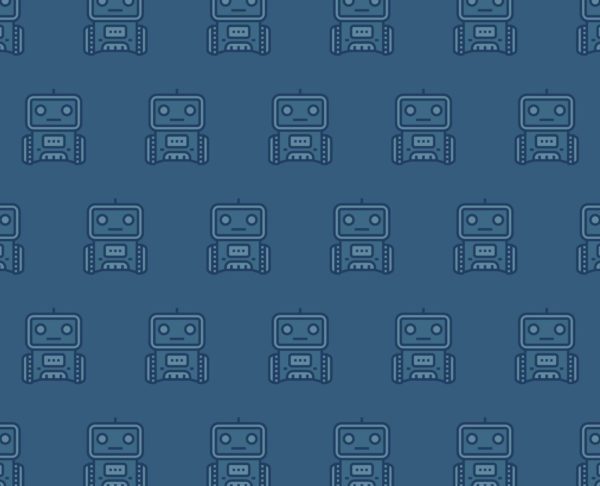True, deep learning involves risk taking. It involves trial and error. Sometimes we must ask for help, and it doesn’t always come easily. Therefore, if we don’t spend time building positive relationships with students, they may not feel comfortable taking risks or asking for help in your library or classroom. They might even disengage to avoid uncomfortable learning moments. And it isn’t just about feeling comfortable taking risks in front of their teachers–we also want our students to feel safe taking risks in front of their peers, which is never easy to do, especially as kids turn into adolescents and young adults. Therefore, taking the time at the beginning of the year (and throughout the year) to create and maintain a safe, inclusive environment for students is imperative for a school year to be filled with learning. In your efforts to cultivate a positive classroom environment, know there is incredible value in making as a tool to do that.
Whether you have maker materials but aren’t using them, or you are brand new to making and have no tools at all, you can use hands-on maker experiences to help create relationships and build community in your classroom. Here are a few thoughts on how we can effectively cultivate a positive learning environment for students.
Provide choice and scaffold for a low barrier entry point. Your first challenges should be FUN. It should set the stage for the rest of the year. It should demonstrate to students that anyone can be a maker, so provide them with choices so they can go the direction they want and give scaffolded choices so they can choose how deep they want to go. Providing students with options might also reveal some informal data about the students themselves. Do they love working through a challenge? Do they need teacher feedback and support? Do they naturally like to collaborate or are they more interested in tackling things on their own? Do they follow the expectations you established before the worktime started, or do they need reminders as they go? Don’t forget to pay attention to the signs they give you during these first activities.

Be present, participate informally, and make connections throughout the process. Show students you care about them. Walk around the room and check in with groups to see how their work is going throughout their worktime. Point out specific things you like about what they are doing. Brainstorm and work alongside them if they need support. Ask them questions about their creations and just spend some time talking to them. Learn about who they are and what they care about. The more you do this work at the beginning of the year, the more productive the learning in your classroom will be as the year progresses and this is a great way to authentically connect with them and have positive interactions.

Focus on collaborative exploration of tools. The beginning of the year should be the time you set a base foundation of knowledge for your students and classroom. It is the time we set expectations. Just like we set expectations for the rest of our classroom work, we should spend time setting expectations for the tools we use when we make. Talk through how to use tools safely and what respectful use of each tool looks like. Then, give students time to get to know each other and learn how to use each tool. Let them play and tinker in order to learn. This will help your students be more productive when you want them to use each tool and apply it to content they are learning later in the year.
…But don’t forget to go deeper. Give them an opportunity to play and explore together, but then provide them with a brief challenge to give students time to figure out how to apply the tools to achieve something. It can also provide students with an opportunity to team up to solve a problem which can be helpful in building classroom relationships. I’ve included a few examples below using common maker tools to help illustrate this idea.
Examples:
- 3Doodler Pens: Give them time to practice, and then have students team up to make a car out of a mix of recyclable materials and printing the wheels using the 3Doodler pens. This lesson from 3Doodler has some great templates and guidance. To make the project go faster, you could have students work in teams of three or four.
- Ozobot: Give them time to practice using different coding methods. Then, try one of the fall activities, linked here.
Some additional concrete ideas of making to build community:
Egg drop challenge: Have students work together to build a container to safely float an egg to the ground from a high distance. Make the egg drop an event for students and have students cheer each other on.
The Marshmallow Challenge: This is a well-known challenge, but for older students in particular, a fun follow-up to the challenge might be to show them part or all of the TED Talk.
Making Connections: Put students in groups and challenge them to learn about each other and find something everyone in the small group has in common. Then, students should make something together to represent this connection. If time allows and students are interested, have them present or have the class guess what the connection is based on their final product.
Plastic Bag DIY Challenge: I love this idea from Science Friday of finding a new purpose for the plastic bag! It is simple, inventive, engaging, and easy to get materials for!
Community Helpers: Have students help the community in some way. Ideas might be to make blankets for people or animals in need, reaching out to a local organization the students brainstorm to inquire how the class might be able to help, or reaching out to teachers within your own school to see how your students might be able to make something to support them.
As you’re planning to engage the individual learners in your classroom and build your unique community this school year, think about ways you might weave in making. Hands-on experiences will give students opportunities to practice failing early in the school year in a low-stakes environment. It will allow students to connect with others and build fun, positive relationships that will empower them to take risks, ask for help when they need it, and lead to powerful learning throughout the rest of the year.
For more on planning for making experiences with students, read my blog post from July or Key Strategies for Maker Education.






